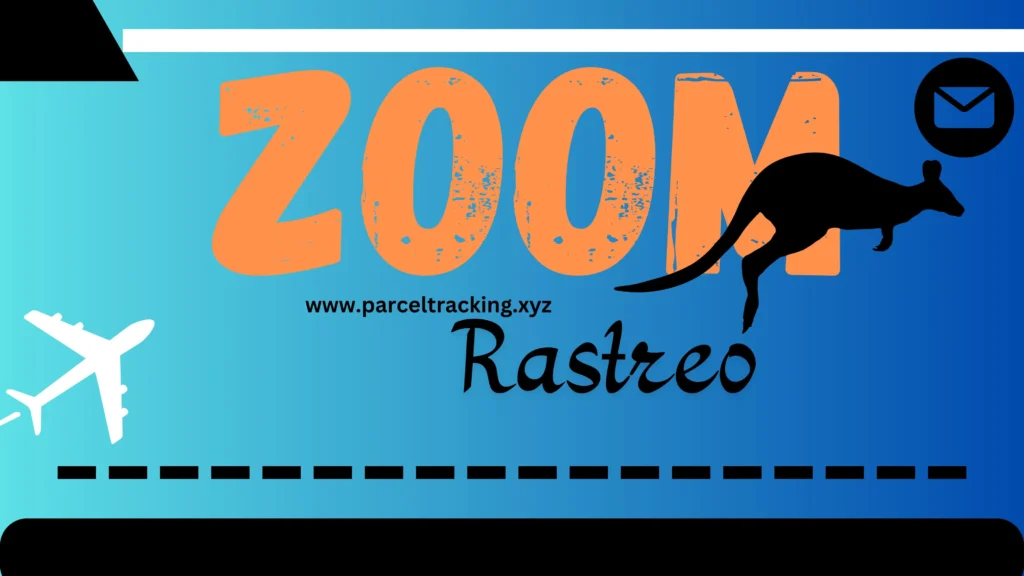Zoom Rastreo has become one of the most popular video conferencing tools in recent years. As more people use it for work, school, and staying in touch with family, questions about tracking and monitoring have grown. This guide explains what “Zoom Rastreo” means, how tracking works in Zoom, and what you need to know to protect your privacy.
The term “Rastreo” comes from Spanish and means tracking or tracing. When we talk about Zoom Rastreo, we’re discussing how Zoom tracks user activity and what information it collects during meetings and while using the app.
What Information Does Zoom Track?
Zoom collects several types of data when you use the platform. Understanding this tracking can help you make better choices about using the service.
Basic Meeting Data
Zoom keeps track of:
- Meeting times and duration
- Who joined the meeting
- IP addresses of participants
- Device information
- Location data (country level)
This basic tracking information helps Zoom run its service and troubleshoot problems. Most video apps collect this kind of data.
Attention Tracking Features
In the past, Zoom had a feature that could tell hosts if participants had the Zoom window in focus. This attention-tracking feature raised privacy concerns, and Zoom removed it in April 2020. However, there are still ways hosts can see if you’re paying attention:
- Polls and questions
- Requiring video to be on
- Checking for responses in the chat
Recording and Transcription
Zoom can record meetings if the host enables this feature. It’s important to know:
- Hosts must get permission to record
- Zoom shows a notice when the recording starts
- Recordings can be saved to the cloud or locally
- Transcripts can be made from recordings

Privacy Concerns with Zoom Rastreo
Many people worry about how much tracking happens in Zoom. These concerns are valid for several reasons.
Data Sharing Practices
Zoom has been criticized for:
- Sharing data with Facebook (this was changed after complaints)
- Sending data to China in some cases
- Not being clear about how data is used
The company has updated its privacy policy several times to address these issues.
Security Problems
There have been several security issues with Zoom:
- “Zoombombing” where uninvited people join meetings
- Weak encryption in earlier versions
- Bugs that could allow hackers to access cameras
Zoom has fixed many of these problems, but new issues sometimes arise.
How Zoom Compares to Other Platforms
When looking at Zoom Rastreo, it helps to compare it with other video platforms. Each service has different tracking policies.
Microsoft Teams
Microsoft Teams:
- Collects similar basic data to Zoom
- Integrates with Office 365, which means more data connection
- Has strong enterprise security features
- Keeps meeting recordings for a limited time
Google Meet
Google Meet:
- Connects to your Google account
- May use data for Google’s advertising network
- Has strong encryption
- Limits recording features in free accounts
Skype
Skype:
- Owned by Microsoft
- Has been around longer with established policies
- Collects user data for service improvement
- Offers end-to-end encryption in some cases
How to Protect Your Privacy on Zoom
If you’re concerned about Zoom Rastreo, there are steps you can take to reduce tracking while still using the service.
Account Settings
Adjust these settings in your Zoom account:
- Turn off attention tracking (for hosts)
- Disable cloud recording
- Limit who can share screens
- Set up waiting rooms for better security
During Meetings
While in meetings, you can:
- Use virtual backgrounds to protect your home privacy
- Mute your microphone when not speaking
- Turn off the video if you don’t need to be seen
- Be careful what you share on your screen
Alternative Options
If Zoom’s tracking concerns you too much:
- Use a different platform with better privacy
- Join by phone for audio-only
- Ask hosts to use end-to-end encryption
- Consider self-hosted alternatives for sensitive meetings
Zoom’s Privacy Policy Changes
Zoom has updated its privacy policy several times since becoming more popular. These changes matter for understanding Zoom Rastreo.
Early Issues
When Zoom first grew in popularity:
- The privacy policy allowed data sharing with advertisers
- Attention tracking wasn’t clearly explained
- User data protection wasn’t strong enough
Recent Improvements
Zoom has made these changes:
- Clearer language about data collection
- Better controls for hosts and participants
- 90-day security improvement plan
- More transparent data practices
Current Status
Today, Zoom’s privacy policy:
- Explains what data is collected
- Clarifies how long data is kept
- Provides options to request data deletion
- Complies with laws like GDPR and CCPA
Legal Regulations Affecting Zoom Tracking
Different laws around the world affect how Zoom can track users and what rights you have.
European GDPR Rules
Under GDPR in Europe:
- Zoom must get consent for certain types of tracking
- Users can request their data
- Data breaches must be reported quickly
- Zoom must justify why it collects each type of data
California Privacy Laws
California has the CCPA and CPRA, which:
- Give users the right to know what data is collected
- Allow people to opt out of data sales
- Require reasonable security measures
- Let Californians delete their data in some cases
International Differences
Zoom operates globally, so it deals with:
- Different privacy laws in each country
- Varying standards for data protection
- Changing regulations as new laws pass
- Requirements to store data in specific regions
Zoom Rastreo for Different User Types
How Zoom tracks you can vary depending on how you use the service.
Business Accounts
If your company uses Zoom:
- Your admin may have access to usage reports
- Meeting data might be stored for longer
- Company policies might require recording
- Additional tracking might be enabled for work purposes
Educational Settings
For schools using Zoom:
- Special privacy rules apply for students under 13
- Teachers may have different monitoring abilities
- School districts may have specific data agreements
- FERPA rules protect student information
Personal Use
When using Zoom for personal calls:
- You have more control over settings
- Less organization-level monitoring occurs
- Free accounts have some feature limitations
- Privacy depends more on your settings
Future of Tracking in Video Conferencing
The way Zoom and other platforms handle tracking will continue to evolve.
Emerging Technologies
New technologies affecting video tracking include:
- Artificial intelligence for automatic monitoring
- Better encryption methods
- New ways to verify identities
- Advanced analytics for participation
Changing Expectations
User expectations are changing:
- More demand for privacy controls
- Growing awareness of tracking issues
- Pressure for transparency
- Calls for regulation of video platforms
Zoom’s Development Direction
Zoom seems to be moving toward:
- More security-focused features
- Better privacy controls
- Clearer communication about tracking
- Balancing convenience with protection
How to Check What Zoom Knows About You
If you’re concerned about Zoom Rastreo, you can find out what information the company has.
Data Request Process
To get your Zoom data:
- Log into your account settings
- Look for privacy or data options
- Submit a formal request if needed
- Be prepared to verify your identity
Understanding Your Data File
When you get your data, you’ll see:
- Meetings you’ve attended
- Account information
- Settings you’ve used
- Messages you’ve sent in chats
Removing Your Information
You can try to remove some data by:
- Deleting recordings you’ve made
- Requesting an account deletion
- Removing personal information from your profile
- Understanding what can’t be deleted (like meeting logs)

Best Practices for Secure Zoom Meetings
To minimize unwanted tracking, follow these best practices.
For Meeting Hosts
If you run Zoom meetings:
- Use passwords for all meetings
- Enable waiting rooms
- Be clear about recording policies
- Learn about all host controls
For Participants
When joining others’ meetings:
- Know your rights regarding recording
- Check if the meeting is being recorded
- Be careful what you share on video
- Understand how to use privacy features
For Organizations
Companies using Zoom should:
- Create clear policies about recording
- Train employees on privacy settings
- Review Zoom’s business agreements
- Regularly update security settings
Conclusion: Balancing Convenience and Privacy
Zoom Rastreo represents the ongoing balance between useful features and privacy concerns. As video conferencing becomes more common, understanding how these platforms track us becomes more important.
The key points to remember are:
- Zoom collects data for legitimate business purposes
- The company has improved privacy practices over time
- You have some control over your information
- Being informed helps you make better choices
Frequently Asked Questions About Zoom Rastreo
1. What exactly does “Zoom Rastreo” mean?
“Zoom Rastreo” combines the video conferencing platform name with the Spanish word for tracking. It refers to how Zoom tracks user activity, collects data, and monitors interactions within the platform. This tracking includes information like meeting attendance, attention levels, and user behavior.
2. Can Zoom hosts see if I’m not paying attention in meetings?
While Zoom removed its official attention-tracking feature in 2020, hosts can still monitor engagement in other ways. They can see if you’ve minimized the Zoom window during screen sharing, use polls to check participation, and see when you’re muted or have your camera off. However, they cannot see what other programs you’re using.
3. Does Zoom record meetings automatically?
No, Zoom does not record meetings automatically. A host must manually start recording, and when they do, all participants see a notice that the meeting is being recorded. In free accounts, recordings are saved to the host’s computer. In paid accounts, recordings can be saved to the Zoom cloud.
4. What information does Zoom collect about me during meetings?
Zoom collects basic data including your name (as entered), email, IP address, device type, operating system, and general location (country/city). If you use chat, those messages may be saved. If the host records the meeting, your video, audio, and shared screens will be in that recording.
5. Can I see what data Zoom has collected about me?
Yes. You can request your personal data from Zoom through your account settings. Go to Privacy Management in your settings, then select “Request my data.” Zoom will prepare a report of data associated with your account, which typically includes your profile, meetings you’ve hosted, and account settings.
6. Is Zoom safe to use for confidential or private conversations?
Zoom has improved its security significantly since 2020, but like any online platform, it’s not 100% secure. For highly sensitive conversations, consider using end-to-end encrypted meeting options, using passwords, enabling waiting rooms, and being careful about what you share on screen.
7. Can my employer monitor my Zoom activities if I use a work account?
Yes. If you use a Zoom account provided by your employer, your organization’s administrators may have access to extensive data about your Zoom usage. This can include meetings attended, chat logs, and in some cases, recordings of meetings. Check your company’s policies about video conferencing monitoring.
8. How long does Zoom keep my data?
Zoom’s retention periods vary by data type. Basic account information is kept as long as you have an account. Meeting metadata (time, participants, etc.) is typically kept for up to one year. Cloud recordings are kept according to the account owner’s settings, but maximum retention is typically one year unless downloaded.
9. How can I improve my privacy while using Zoom?
To enhance your privacy on Zoom: use virtual backgrounds to hide your surroundings, regularly update the app for security fixes, use a unique password for your Zoom account, be careful about what you share on-screen, disable unnecessary features like file transfer if not needed, and review your privacy settings regularly.
10. Is Zoom sharing my data with third parties?
Zoom’s current privacy policy states that they do not sell your data. However, they do share some data with third parties for specific purposes like customer support, cloud services, and analytics. They also share data when required by law. You can opt out of some data sharing in your Zoom privacy settings.




Your article is extremely educational. I learned a lot in it. Thank you for sharing.
I love how you deconstruct complex ideas into simple and understandable parts.